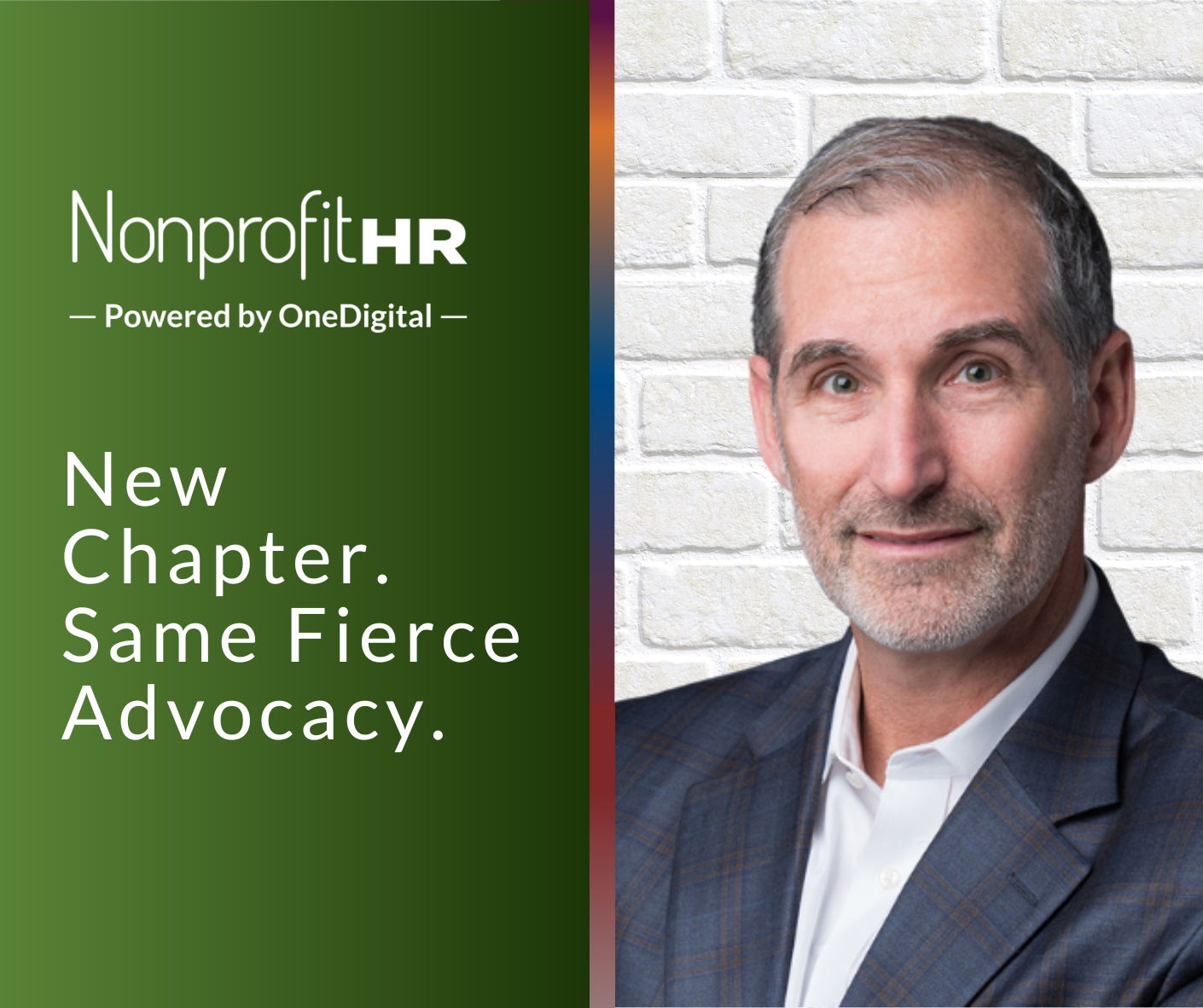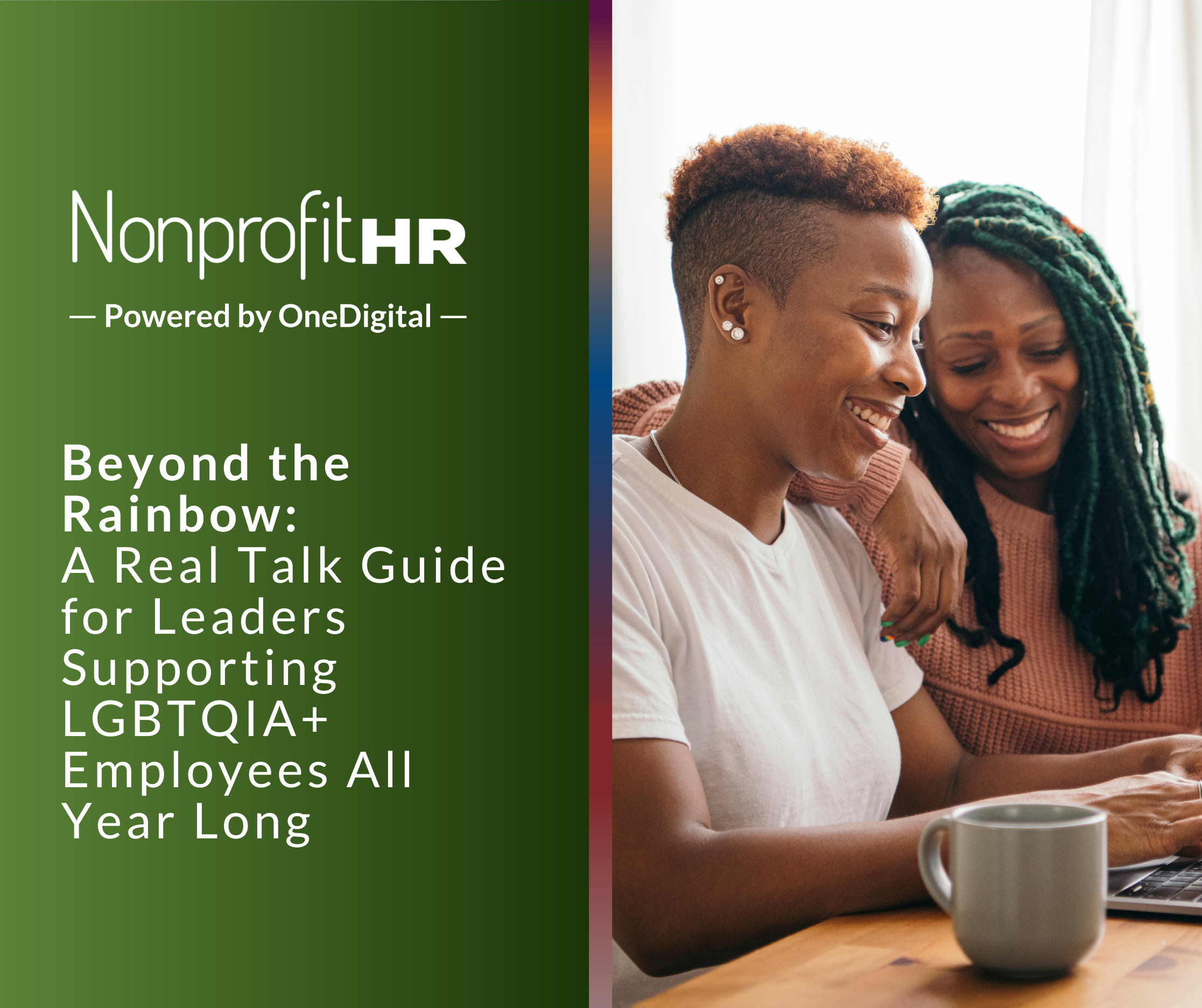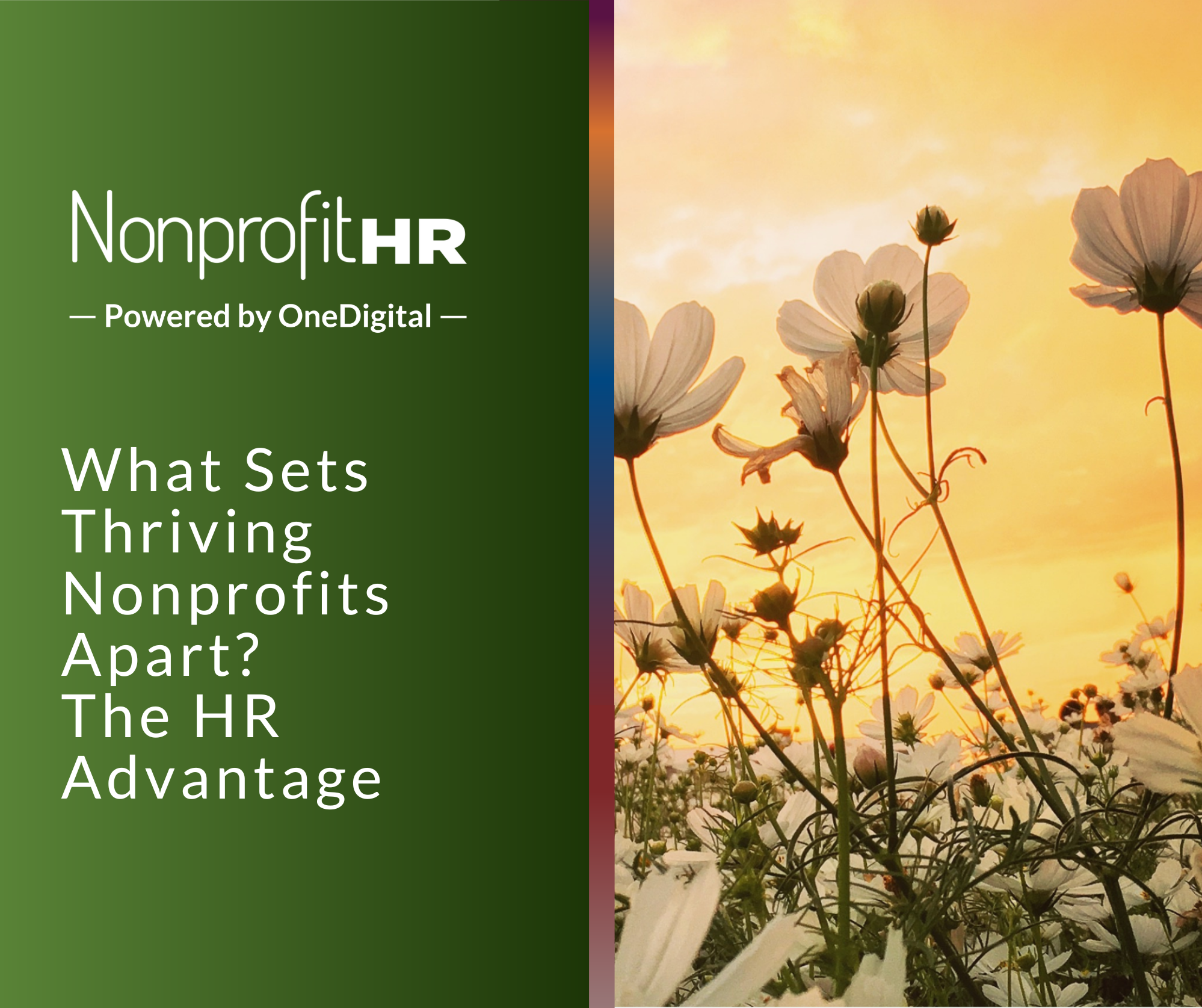WTOP: 5 ways nonprofits can…
As you begin to consider your organization’s strategic and budgetary plans for 2018, ask yourself: will you have the right people and the right talent strategies in place to achieve your mission?
This year, the biggest takeaway from our annual Nonprofit Employment Practices Survey focused on the fact that competition for talent is heating up between nonprofits and for-profits, due in part to the growth of social enterprise and purpose-driven sectors. In 2015 and 2016 our survey showed that nonprofit hiring was happening at a faster pace than in the for-profit space, but this year, it’s clear that gap is narrowing. The percentage of nonprofits planning to hire shrunk seven percentage points over the last year, from 57 to 50 percent. At the same time, the percentage of for-profit companies planning to hire grew four percentage points, from 36 percent to 40 percent––the best it has been in a decade.
But the growth of purpose-driven business and increasing competition for talent with the private sector isn’t the only talent-related concern that nonprofit organizations need to keep top of mind as they look toward 2018. Our country’s tumultuous political climate is affecting nonprofit funding and creating more need for healthy, sustainable organizations. As the importance of nonprofits continues to grow and become more urgent, and your organization is asked to do even more with even less, prioritizing your people will be more necessary than ever.
Keeping our latest Nonprofit Employment Practices survey findings in mind, here’s what you can do in the final quarter of 2017 to better prepare for 2018:
1. Develop or revisit and improve talent acquisition, retention and diversity, equity and inclusion (DEI) strategies.
Securing, engaging and retaining high performing leadership and staff who are engaged and aligned with your culture and mission should be a top priority for your organization. This will be even more important in the year ahead as for-profit competition for mission-driven talent continues to heat up.
That said, we recognize that, according to the 2017 Nonprofit Employment Practices Survey, 64 percent of nonprofits don’t have a formal recruitment strategy. If your organization is among this group, make it a priority to consider how you currently approach talent acquisition and how you might improve in 2018. If your organization is among the 36 percent of nonprofits with a recruitment strategy already in place, consider revisiting and revising that strategy and your employer brand in order to remain competitive against for-profit employers.
Unfortunately, recruitment isn’t the only area where most nonprofits are lacking a strategy. The vast majority––81 percent––of social sector organizations don’t have a retention strategy either.
This is especially problematic because the job market is projected to continue to improve into 2018. Nonprofit employees who were once content with their roles at your organization may find themselves with new options in the year ahead, especially as some for-profits become more aggressive about poaching “passive” yet purpose-driven jobseekers from the social sector. January is the most popular month for job changes, and organizations without solid retention and engagement strategies may be left scrambling to refill crucial roles when the new year begins. Don’t delay. Develop a retention and engagement strategy now to ensure you’re positioned to keep critical team members on board in the coming months and beyond.
And while most nonprofit leaders identify diversity, equity and inclusion (DEI) as top management priorities, our 2017 survey found that almost half of nonprofits don’t actually have a DEI strategy in place. Diverse and inclusive work environments don’t develop by accident. They require intentional decision-making and strategic investment. If your organization does not already have a formal DEI strategy in place, there is no better time to start developing one than now.
2. Align your talent strategies with your organization’s strategic plan.
As you develop your organization’s strategic plan and priorities for 2018, your talent strategies, like the ones discussed above, must be aligned with it. Remember: talent is the most critical element in achieving your organization’s mission and should be prioritized in your overall strategic plan. Now is the time to ask yourself and your leadership team: do our plans and budgets for talent and culture truly reflect the goals we have for the year ahead?
Prioritizing investments in talent requires more than simply making funds available for competitive salaries. Making time for basic recruitment activities and HR administration isn’t enough, either. The most impactful nonprofits recognize the importance of investing in culture initiatives, leadership development, performance management, talent analytics and more. They also focus on using data to drive investments in these areas.
Does your talent strategy include plans to invest time and resources in areas like these, as required by your organization’s big picture strategic goals or theory of change?
3. Advocate for an increased investment in talent.
After you put talent strategies in place that are aligned with your organization’s broader strategic plan, the next step is appealing to your leadership, board and funders for a greater investment in talent and culture. Present decision makers with your plans and the data to support them now, so that, when budgets are developed for 2018 and beyond, initiatives to support and develop talent are prioritized as well.
If you’re struggling to find the budget to support all the talent and culture initiatives you’d like to pursue in the year ahead, you’re not alone. Historically, less than one percent of nonprofit funding has been spent on nonprofit talent, and just 0.03 percent of annual spending sector-wide is allocated to leadership development. And according to the 2017 Nonprofit Employment Practices Survey, the greatest talent challenge nonprofits face is hiring qualified staff within a limited budget, followed by matching salaries with market demands.
Securing adequate budgets for talent and culture initiatives is often an uphill battle, but positioning your retention, recruitment, DEI and compensation strategies in the context of your organization’s broader strategic plan and long-term sustainability can make all the difference.
4. Be realistic. Choose one or two of the areas above to focus on over the next year.
We understand that your organization faces challenges every day, and improving your approach to talent and culture is just a piece of the puzzle. To avoid losing focus on other priorities or becoming overwhelmed, choose one key area you would like to focus on in the months ahead (like recruitment, retention, culture or DEI) and build from there.
You can learn from sub-sectors that are doing well in the specific areas you would most like to improve. For example, our survey found that arts, culture and humanities organizations are most likely to have effective retention strategies in place, and health organizations are most likely to have effective recruitment strategies. Connect with leaders of organizations in these sub-sectors to learn more about their initiatives and let their examples be your guide.
To help you along the way, we recommend attending events, round table discussions, webinars and more with a focus on the area or areas you most want to improve. This year, many of the speakers at our annual Nonprofit Talent and Culture Summit will discuss how organizations can leverage the power of talent and culture to continue to be more impactful — especially in our current political and economic climate. We also host regular webinars and Interact for Impact events on topics related to talent management that can provide further guidance for your organization.
To learn more about how the talent practices of nonprofits like yours changed over the past year, visit the Nonprofit Employment Practices Interactive Data Portal and explore all the key findings from this year’s survey.





























